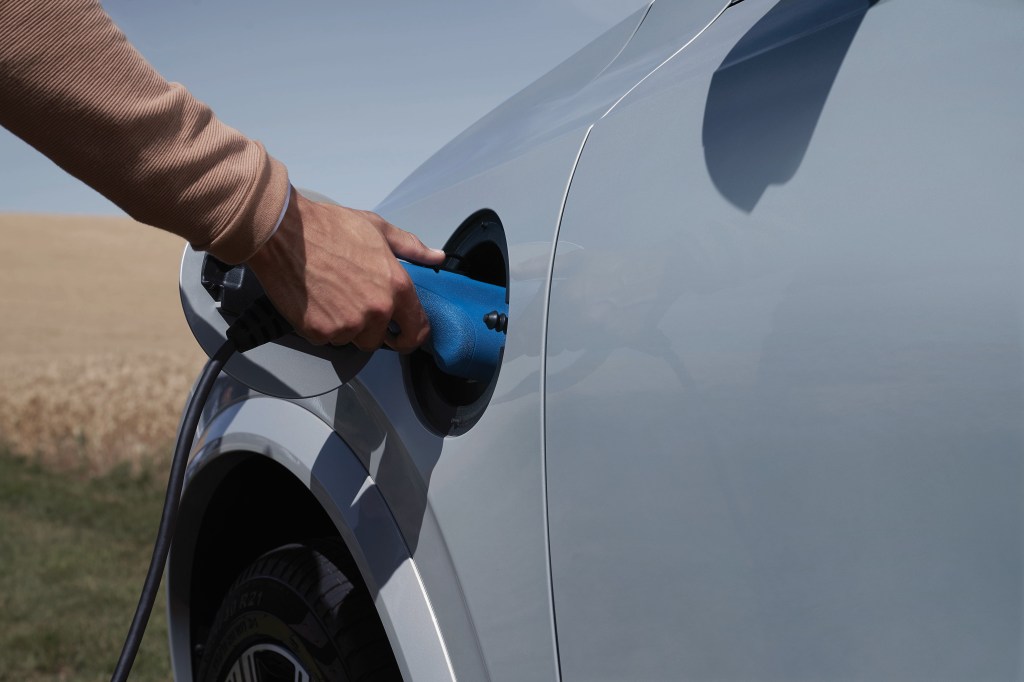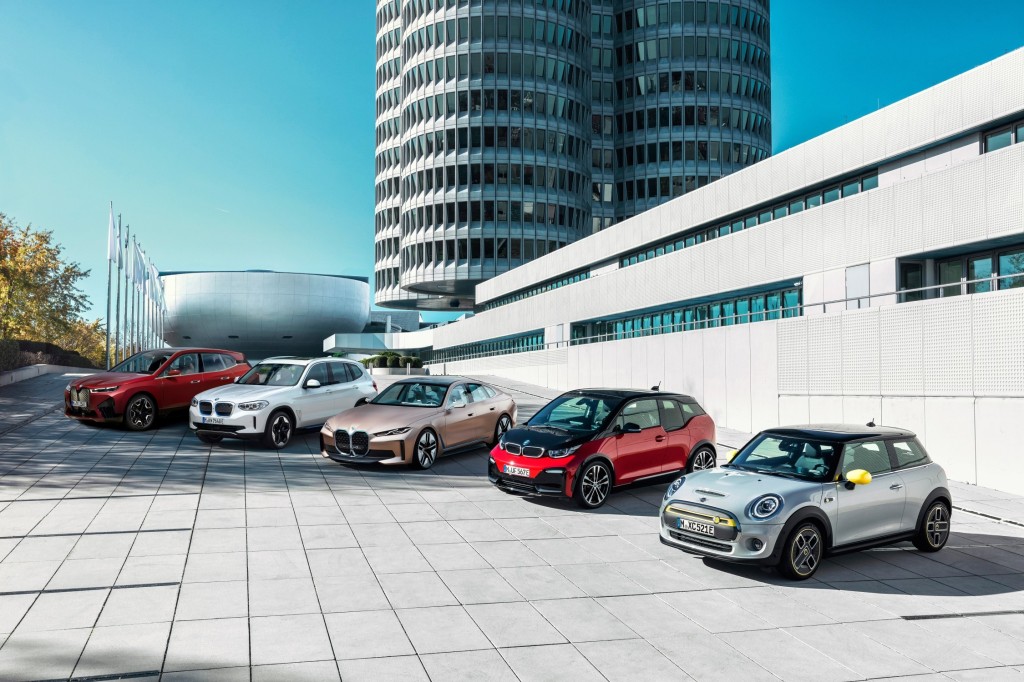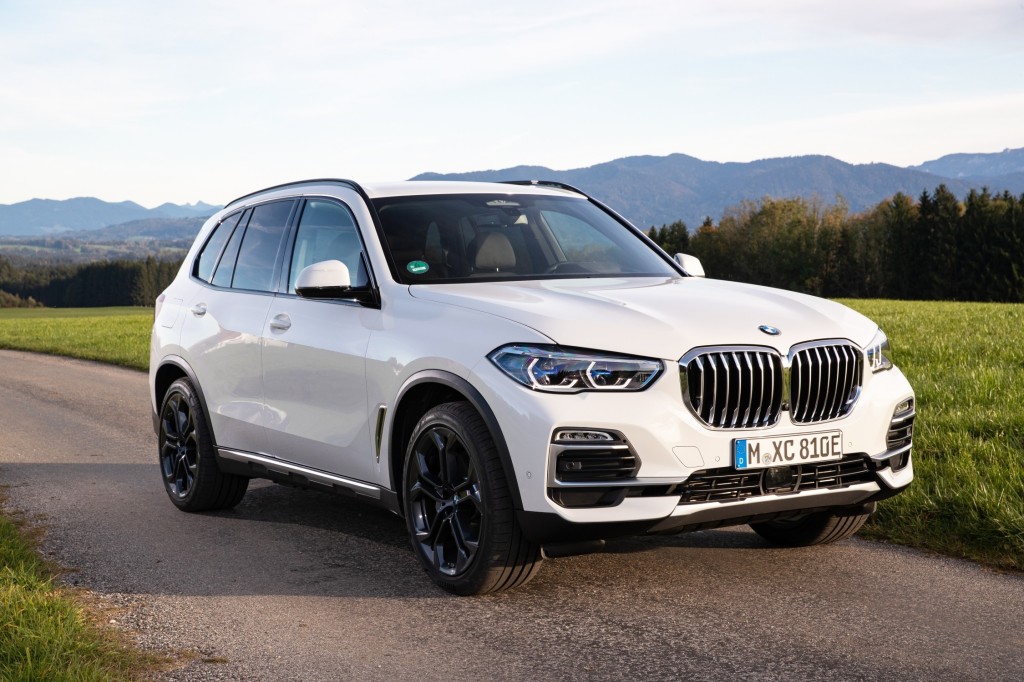By Steve Schaefer

Volvo has been talking about going electric a lot lately. They plan to do it with a mixture of all-electric vehicles, like their new XC40 Recharge, and plug-in hybrid versions of their SUVs and sedans. The XC90 Recharge is an example of the second group.
The XC90, as Volvo’s larger SUV, is currently their most popular model in the United States. If you track the history of Volvo, the Swedish (now Chinese-owned) company was famous for decades for its safe, solid, boxy sedans and wagons. With today’s crossovers and SUVS at the forefront of the market, they have pivoted nicely in recent years, although a wagon is still available if you want one.
While Volvo offers a T5 turbocharged model and T6 turbocharged and supercharged model of the gasoline-only XC90, it’s the T8 that’s the focus here. While it shares the other models’ 2.0-liter engine, the T8 gets a modified version with 313 horsepower and 295 lb.-ft. of torque, which combined with a rear-mounted electric motor and front-mounted starter motor bumps power up to 400 horsepower and 472 lb.-ft.
The 34-kW starter motor sits on the engine and seamlessly transitions power between it and the electric motor in back—which is what Volvo drivers expect. It also adds 111 lb.-ft of torque to the propulsion system, so it’s small but significant.
The main electric motor sits on the rear axle and adds 87 horsepower and makes all-wheel drive easy by providing a separate power source for the rear wheels. Of course, high tech helps coordinate this so it’s seamless from the driver’s chair.
It all runs through an eight-speed Geartronic automatic transmission and uses start-stop technology. The engine shuts off when you’re at a traffic light to save fuel.

That driver enjoys a great view of the road over the XC90’s clean, tailored dash. I got to see this a lot, since during our test week I took two 170-mile round trips to visit my family (in my COVID-19 bubble). The XC90 lives for these cruises, with fine highway manners and the Bowers & Wilkins Premium Sound system ($3,200). In fact, part of accurately describing the experience of driving this car is listing a sample of its many charms, all of which add to the bottom line, of course.
My Savile Gray Metallic tester was the Inscription trim, which base prices at $69,750 before shipping ($995). But let’s look at what made my sample a premium ride.
Volvo has developed an excellent user experience with its vertical center touch screen, so it’s easy and pleasant to use the audio system and seek information as you roll along. You can swipe to open up vast areas of customization, best tackled while the car is sitting in your garage or driveway.
The Inscription features Nappa Leather or Tailored Wool Blend upholstery – your choice, and both elegant. It has the expected power seats, and these include side support, lumbar and memory, and heat. As they’re Volvo seats, they’re supremely supportive and comfortable. There are wood inlays, the Sensus Navigation system, sun curtains on the back windows, and lots more.
It goes up from there. The Lounge Package ($1,700) provides backrest massage for the front seats, which I admit I didn’t use, but would be great for long trips. They are meant to keep the blood flow going, not to put you to sleep.
The Climate Package ($750) is a must-have in cold climates, with heated windshield wipers, heated rear seats, and a heated steering wheel.
The Advanced Package ($1,500) adds a fully featured head-up display and 360-degree surround cameras.
But wait—there’s more. That Savile Gray paint is a $645 option. The 4-Corner Air Suspension ($1,800) provides smooth sailing and load leveling. I noticed it settling down after I parked the car at my destination. Although the Inscription arrives with 20-inch alloys already, my tester wore stunning 21-inchers for an extra $800.
What does all this add up to? $81,690, and if you’re in the market for a luxury ride, it feels worth it.

A plug-in hybrid vehicle is especially good for local electric motoring with the freedom to burn gas on a longer trip. The XC90 is old school, in that its 11.6-kW battery, tucked away under the car along the center tunnel, provides just 18 miles of all-electric motoring. That’s perfect for errands and modest commuting, especially if there’s charging at work, but for longer trips, it empties quickly. Luckily, you can still get some benefits of the motors by regenerating some power with braking.
You still see some nice benefits by adding the motors and the plug. Fuel economy for the Recharge is 55 miles per gallon electric (MPGe) when you use electricity and gasoline and drops to 27 mpg when you don’t charge up the battery. The EPA’s green scores on the standard 0-10 scale, where 10 is best, include a 7 for Smog and on the Fuel Economy and Greenhouse Gas score, a 7 for MPG and a 9 for CO2. Not bad for a big hauler with room for the family and your stuff. I averaged 25 mpg over 364 miles of mostly freeway driving.

Charging is easy – with public stations or your home charger. Volvo also supplies a dual-mode charging cable, allowing you to charge slowly overnight with regular 120-volt household current or plug into your dryer’s or other 240-volt outlet to fill the battery in 2.5 hours.
The XC90 Recharge T8 has several drive modes to choose from. The default Hybrid mode uses its computer to balance gas and electric propulsion for maximum efficiency. Pure mode uses just electricity and makes several adjustments to the drivetrain while providing information to help the driver be more efficient. Power mode maximizes everything. All Wheel Drive mode improves traction in slippery conditions. You can use Individual mode to customize your settings. Off Road mode maximizes the car’s performance at speeds below 12 mph for slowly traversing rough terrain.
Of course, as a Volvo, the XC90 inherits a long list of safety features—too many to detail here. See their website for more details, but you can feel assured that your family is well protected in this car.
The Swedish-built XC90 Recharge T8 fulfills its task as a luxury cruiser for those who can afford it. There are rivals out there, but none possess the Scandinavian design approach. The addition of a plug-in hybrid drivetrain makes it a powerful and cleaner beast and moves Volvo forward on the path to an all-electric future.



































